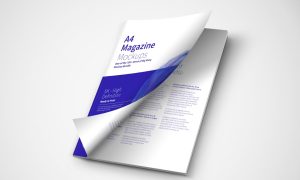Effect of plasma nitriding on the strength of
fine protrusions formed by sputter etching of
AISI type 420 stainless steel
تاثیر نیتروژن دهی پلاسمایی بر استحکام برآمدگی های ریز تشکیل شده
از اچ کند و پاشی (sputter etching) فولاد زنگ نزن نوع AISI 420
ABSTRACT
Argon ion sputter-etching of AISI type 420 martensitic stainless steel was carried out to form conical protrusions with bottom diameter of 10–30 μm on the specimen surface by using a radio-frequency magnetron sputter-apparatus. Plasma-nitriding was applied to the protrusions with various mixing rate of nitrogen and argon gas. The shape of the protrusions was examined by using a scanning electron microscope, and the nitrides formed on the protrusions were identified by means of an X-ray diffraction analysis. Micro-Vickers hardness tests and nano-scratch tests were used to evaluate the deformation resistance of the protrusions. By plasma-nitriding at a nitrogen pressure of 130 Pa and a nitriding power of 50 W, about 1.3 times larger indentation resistance than that of the as-sputter-etched protrusions was obtained after a long nitriding time of 14 ks. When plasma-nitriding was carried out at a lower nitrogen pressure of 1.2 Pa and a higher nitriding power of 200 W for 7.2 ks, indentation and scratch resistances of the protrusions largely increased to the values almost three times as large as those of the as-sputter-etched protrusions. However, the protrusions were brittle due to the formation of thick nitride layers and the sharpness of the protrusions was lost. Reduction of the nitriding power to 50 W recovered the sharpness with small amount of surface nitride layer, but the indentation resistances were only 1.4 times larger values than those of the as-sputter-etched protrusions. On the other hand, plasma-nitriding using a mixture of nitrogen gas of 0.53 Pa and argon gas of 0.67 Pa at the power of 50 W produced almost twice larger indentation and scratch resistances than those of the as-sputter-etched protrusions within a short nitriding time of 1.8 ks, retaining the sharpness of protrusions without forming brittle nitrided layers.
![]() جهت دانلود رایگان نسخه لاتین این مقاله اینجا کلیک کنید .
جهت دانلود رایگان نسخه لاتین این مقاله اینجا کلیک کنید .

چکیده
اچ کند و پاشی آرگون یون فولاد زنگ نزن مارتنزیتی نوع 420 انجام شد تا برآمدگی های مخروطی با قطر قاعده ی 10 – 30 میکرون روی سطح نمونه با استفاده از تجهیزات کند و پاش رادیو فرکانس ماگنترون ایجاد شود. نیتروژن دهی پلاسمایی روی برآمدگی ها با ترکیب های مختلفی از گاز آرگون و نیتروژن اعمال شد. شکل برآمدگی ها با استفاده از یک میکروسکوپ الکترونی روبشی بررسی شد، و نیتریدهای تشکیل شده روی برآمدگی ها با استفاده از آنالیز تفرق پراش ایکس شناسایی شدند. آزمون های میکرو سختی ویکرز و نانو خراش جهت ارزیابی مقاومت به تغییر شکل برآمدگی های صورت گرفت. با نیتروژن دهی پلاسمایی در یک فشار نیتروژن 130 پاسکال و توان نیتروژن دهی 50 وات، مقاومت به فرورفتگی تقریباً 1.3 برابر برآمدگی های اچ کند و پاش شده ای بود که پس از یک مدت نیتروژن دهی طولانی ks 14 حاصل شده بود. زمانی که نیتروژن دهی پلاسمایی در فشار نیتروژن پایین تر یعنی 1.2 پاسکال و توان نیتروژن دهی بالاتر یعنی 200 وات در 7.2 کیلوثانیه انجام گرفت، مقاومت به فرورفتگی و خراش برآمدگی ها به میزان قابل توجهی افزایش یافت که حدوداً سه برابر میزان مقاومت برآمدگی های اچ کند و پاش شده بود. با این حال برآمدگی ها به خاطر تشکیل لایه های ضخیم نیترید روی آن ها شکننده بودند و تیزی آن ها از بین رفته بود. با کاهش توان نیروژن دهی به 50 وات تیزی برآمدگی ها به خاطر ضخامت کم لایه های نیتریدی، بازیابی شد اما مقاومت به فرورفتگی آن تنها 1.4 برابر برآمدگی های اچ کند و پاش شده، بود. از طرف دیگر نیتروژن دهی پلاسمایی با استفاده از ترکیبی از گاز نیتروژن با فشار 0.53 پاسکال و گاز آرگون با فشار 0.67 پاسکال در توان 50 وات باعث ایجاد مقاومت به فرورفتگی و خراش تقریباً دوبرابر برآمدگی های اچ کند و پاش شده با یک زمان نیتروژن دهی کوتاه 1.8 کیلو ثانیه ای شد، و همچنین تیزی برآمدگی ها نیز بدون تشکیل لایه های نیتریدی ترد حفظ شد.
![]() جهت دانلود ترجمه تخصصی و فارسی این مقاله می توانید وجه آنرا پرداخت نموده و بلافاصله دریافت نمایید.
جهت دانلود ترجمه تخصصی و فارسی این مقاله می توانید وجه آنرا پرداخت نموده و بلافاصله دریافت نمایید.






نقد و بررسیها
هنوز بررسیای ثبت نشده است.